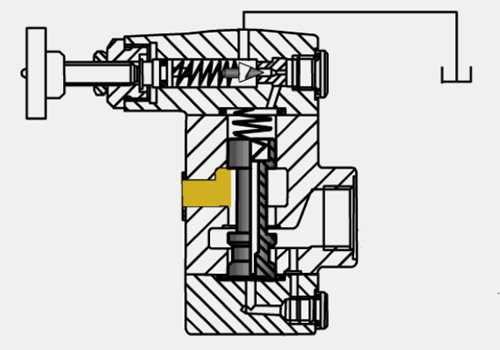The pressure reducing valve VS overflow valve
Both the pressure reducing valve and overflow valve can be used to regulate the pressure and maintain the safety of the pipeline. The pressure reducing valve is a pressure regulating valve that makes the valve outlet pressure lower than the inlet pressure, mainly used to reduce the pressure of a branch oil line in the hydraulic system to make the branch pressure is lower than the main pressure and stable. The disc of pressure reducing valve in the valve body reduce the medium pressure and adjust the opening degree under the downstream pressure, so that the downstream pressure remains in a certain range, to keep the outlet pressure in the set range in the case of constant changes in the inlet pressure.
The overflow valve, also known as the relief valve, an automatic pressure relief device driven by the static pressure in front of the valve. It opens proportionally as the pressure exceeds the opening force, mainly used for fluid applications. It is mainly used for constant pressure,overflow and safety protection in the hydraulic system.

Quantitative pumps provide constant flow in the throttling control system. When the system pressure increases, the flow decreases. At this point, the overflow valve is opened to make the excess flow overflow back to the tank, ensuring that the inlet pressure of the overflow valve constant, that is, the pump outlet pressure. When it is used to limit the pressure, it can be used as a safety valve. When the system is working normally, the overflow valve is in the state of closure and started when the system pressure is greater than its set pressure, which offers overload protection for the system. The differences are:
- Different working purposes. The overflow valve is usually connected in parallel with the branch of the system to prevent system overload and ensure safety. Pressure-reducing valves are generally connected in series on a certain road to reduce pressure under the premise that the system cannot be loaded. It can be said that the former is passive work, and the latter is active work.
- The pressure reducing valve maintains the pressure at the outlet unchanged, while the overflow valve maintains the pressure at the inlet unchanged;
- The pressure reducing valve is normally operated, reducing pressure through the narrow channel. The overflow valve is normally closed and only acts when the system is overpressurized.



Leave a Reply
Want to join the discussion?Feel free to contribute!